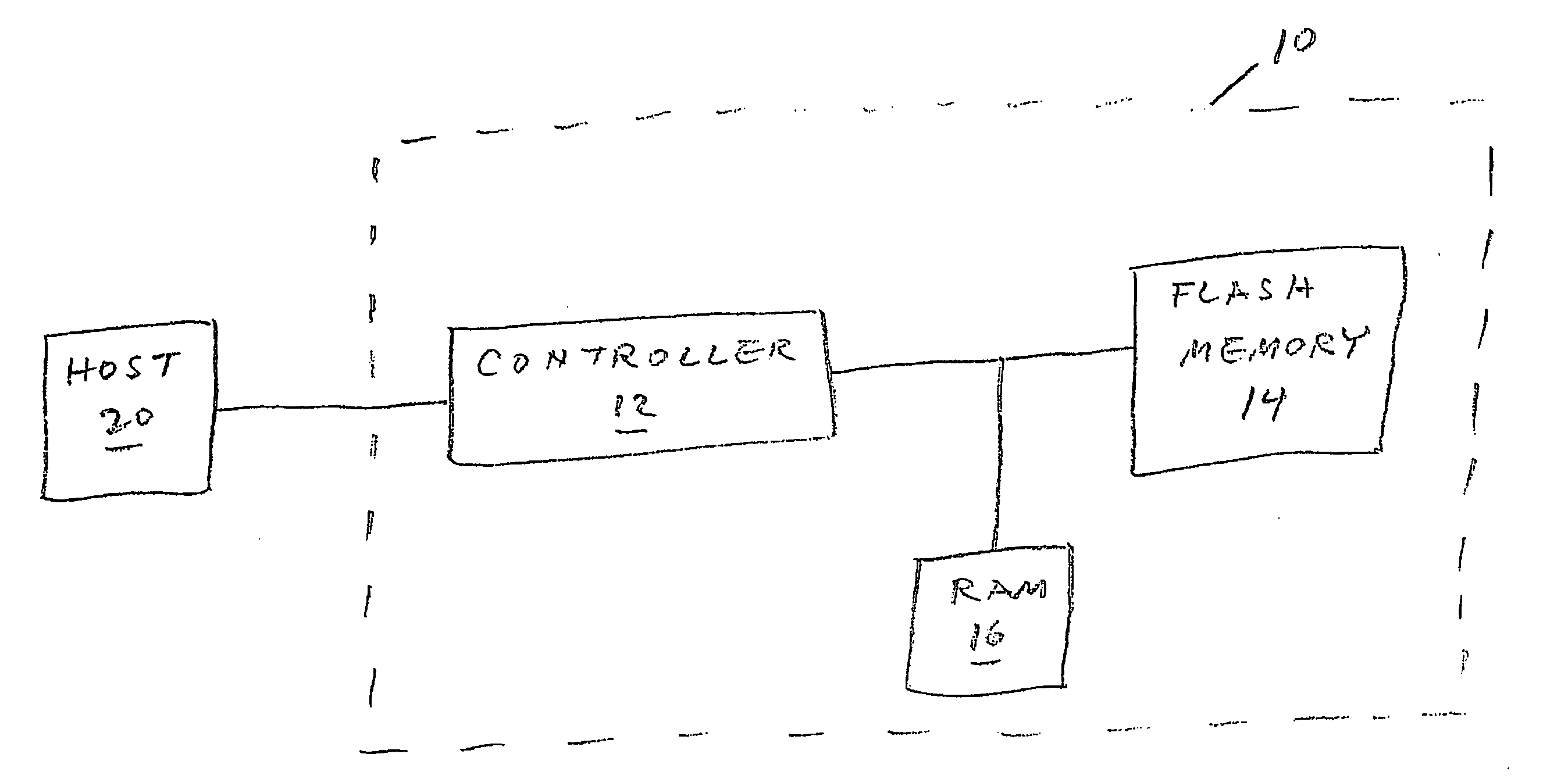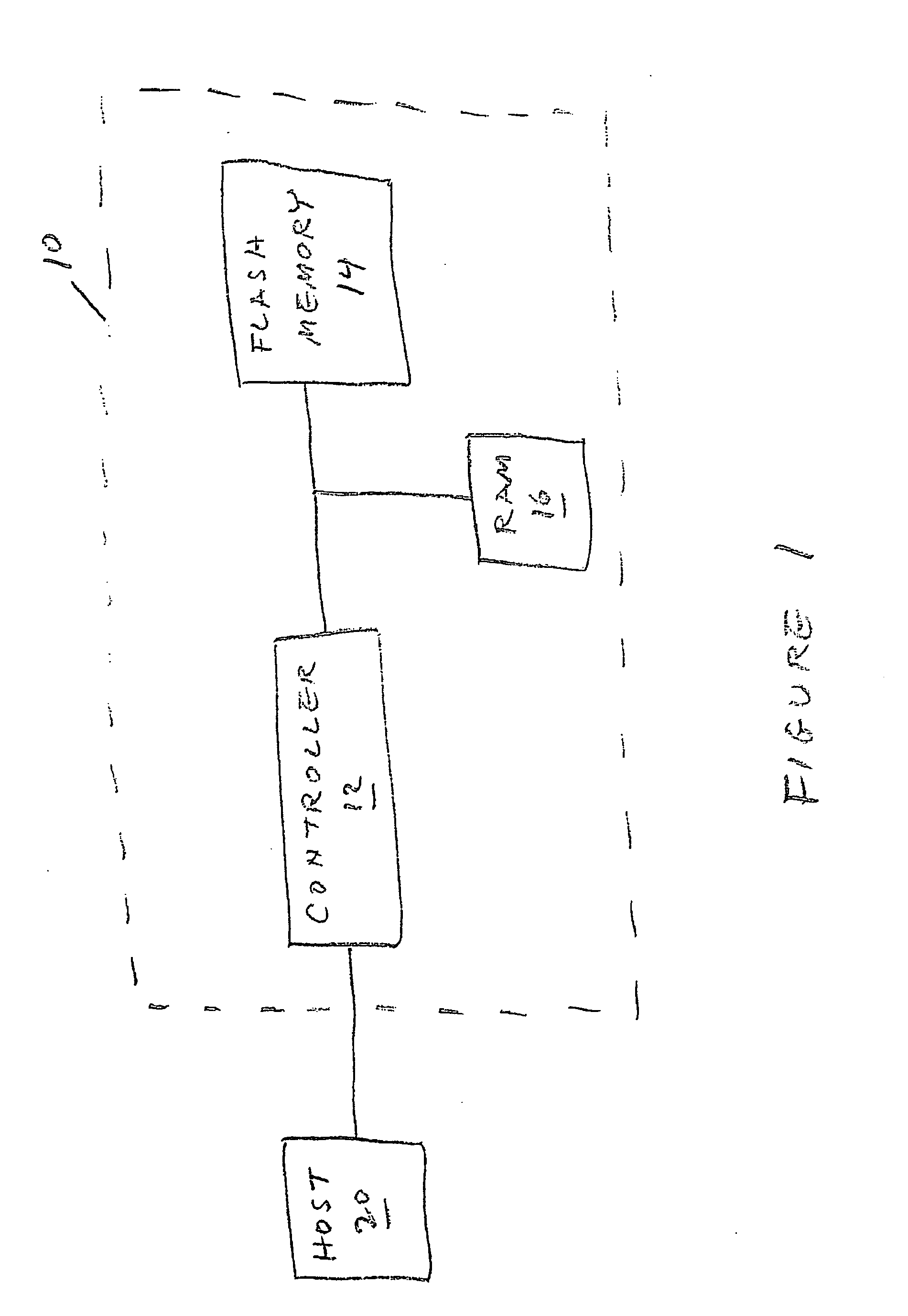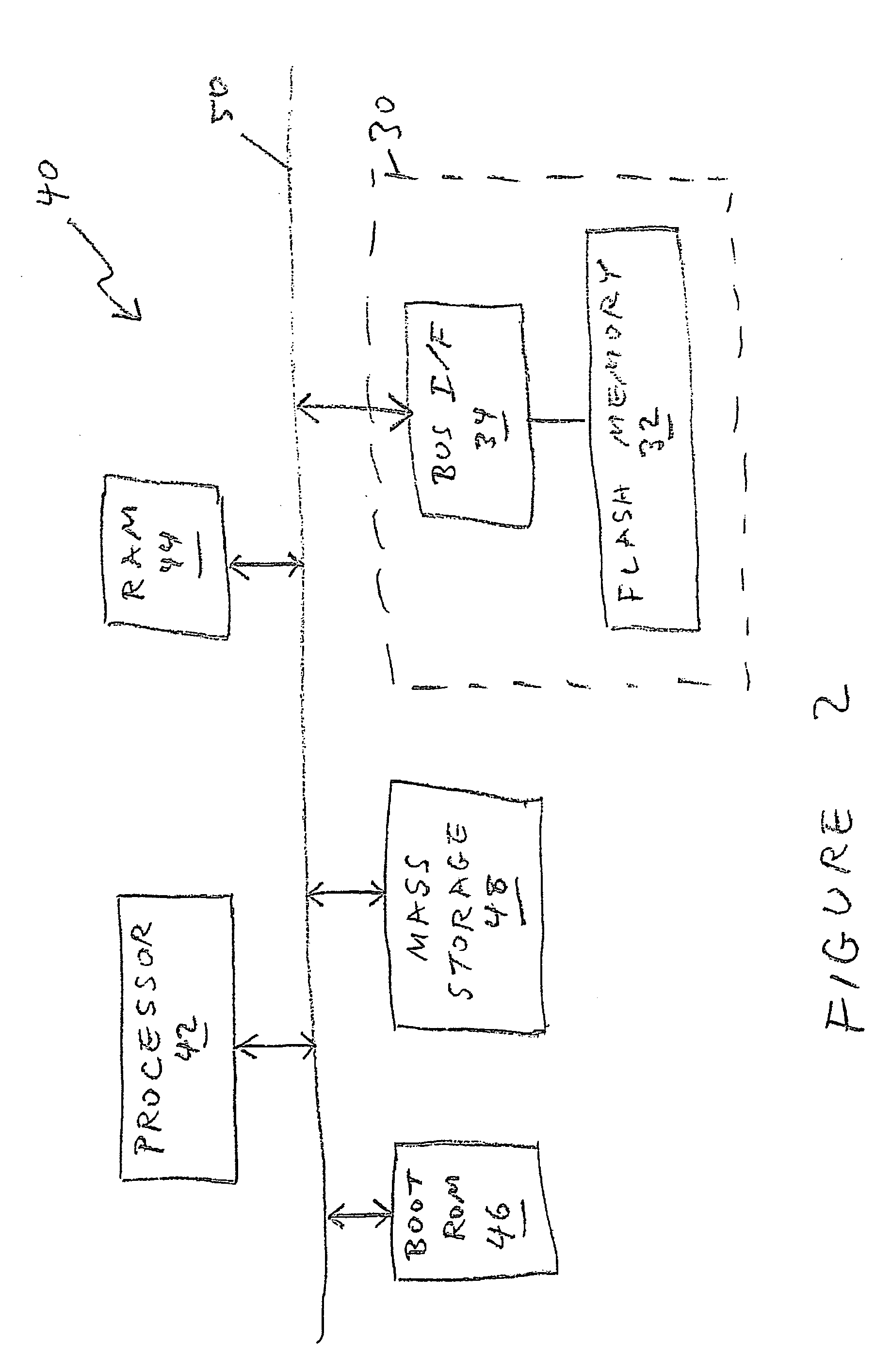Error correction decoding by trial and error
a technology of error correction and decoding, applied in the field of decoding representations of codewords, can solve the problems of less “efficient” ecc schemes, high proportion of memory cells used for parity bits, and high complexity of encoding and decoding
- Summary
- Abstract
- Description
- Claims
- Application Information
AI Technical Summary
Benefits of technology
Problems solved by technology
Method used
Image
Examples
Embodiment Construction
[0048]The principles and operation of error correction decoding according to the present invention may be better understood with reference to the drawings and the accompanying description.
[0049]According to the present invention, two different decoders are used for decoding the same codeword. It should be emphasized that the two decoders operate on the same codeword, containing the same parity bits, and therefore should be considered as two implementations of the same ECC decoding computation.
[0050]The present invention is truly innovative because to one ordinarily skilled in the art this approach would seem useless. Two computations implementing the solution of the same problem should not be expected to bring any advantage over only one computation solving the same problem. However, suppose we have two decoders (or one decoder capable of operating in two different modes) with the following characteristics:[0051]a. The first decoder is fast and consumes little power, but on the othe...
PUM
 Login to View More
Login to View More Abstract
Description
Claims
Application Information
 Login to View More
Login to View More - R&D
- Intellectual Property
- Life Sciences
- Materials
- Tech Scout
- Unparalleled Data Quality
- Higher Quality Content
- 60% Fewer Hallucinations
Browse by: Latest US Patents, China's latest patents, Technical Efficacy Thesaurus, Application Domain, Technology Topic, Popular Technical Reports.
© 2025 PatSnap. All rights reserved.Legal|Privacy policy|Modern Slavery Act Transparency Statement|Sitemap|About US| Contact US: help@patsnap.com



